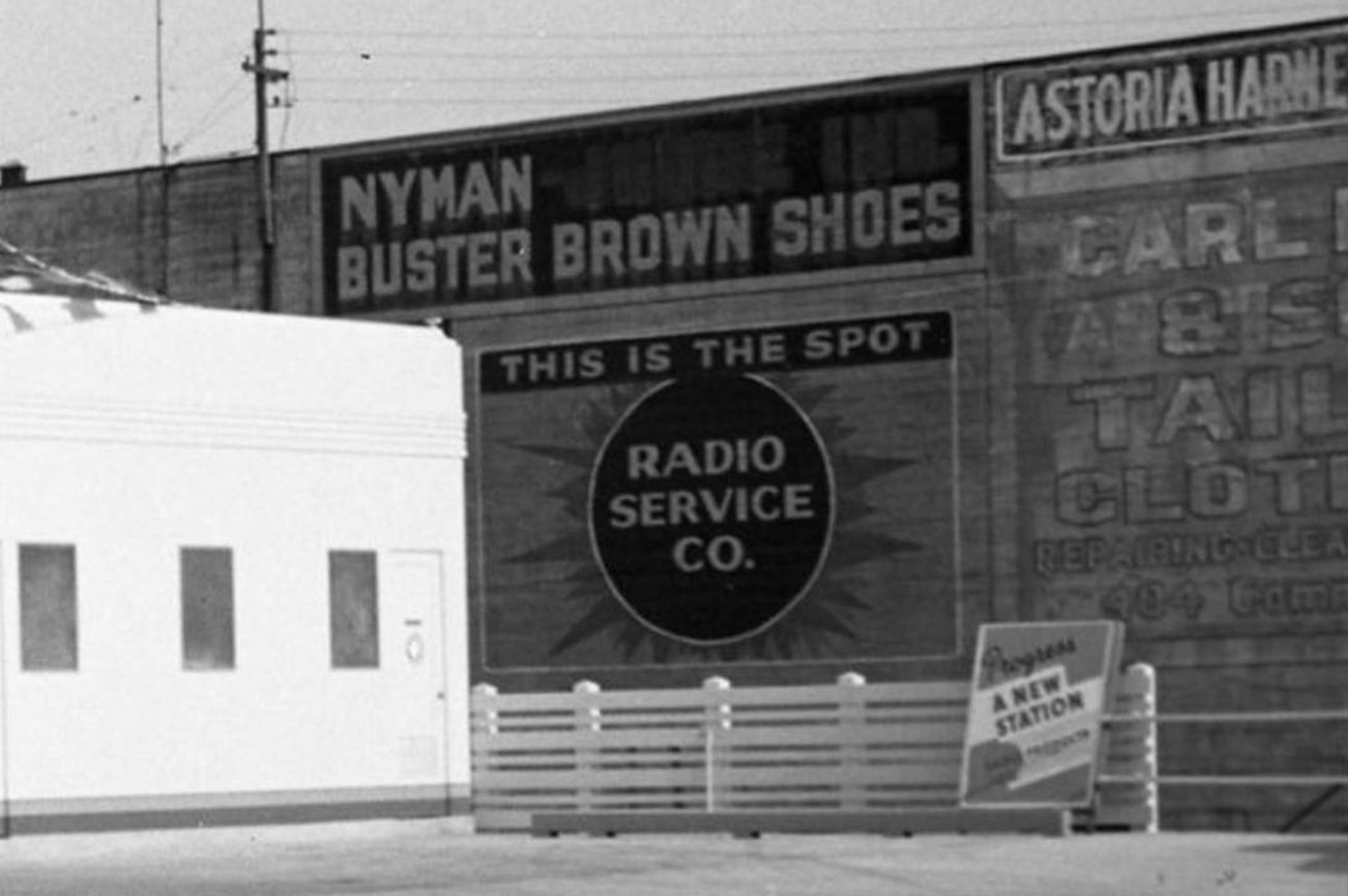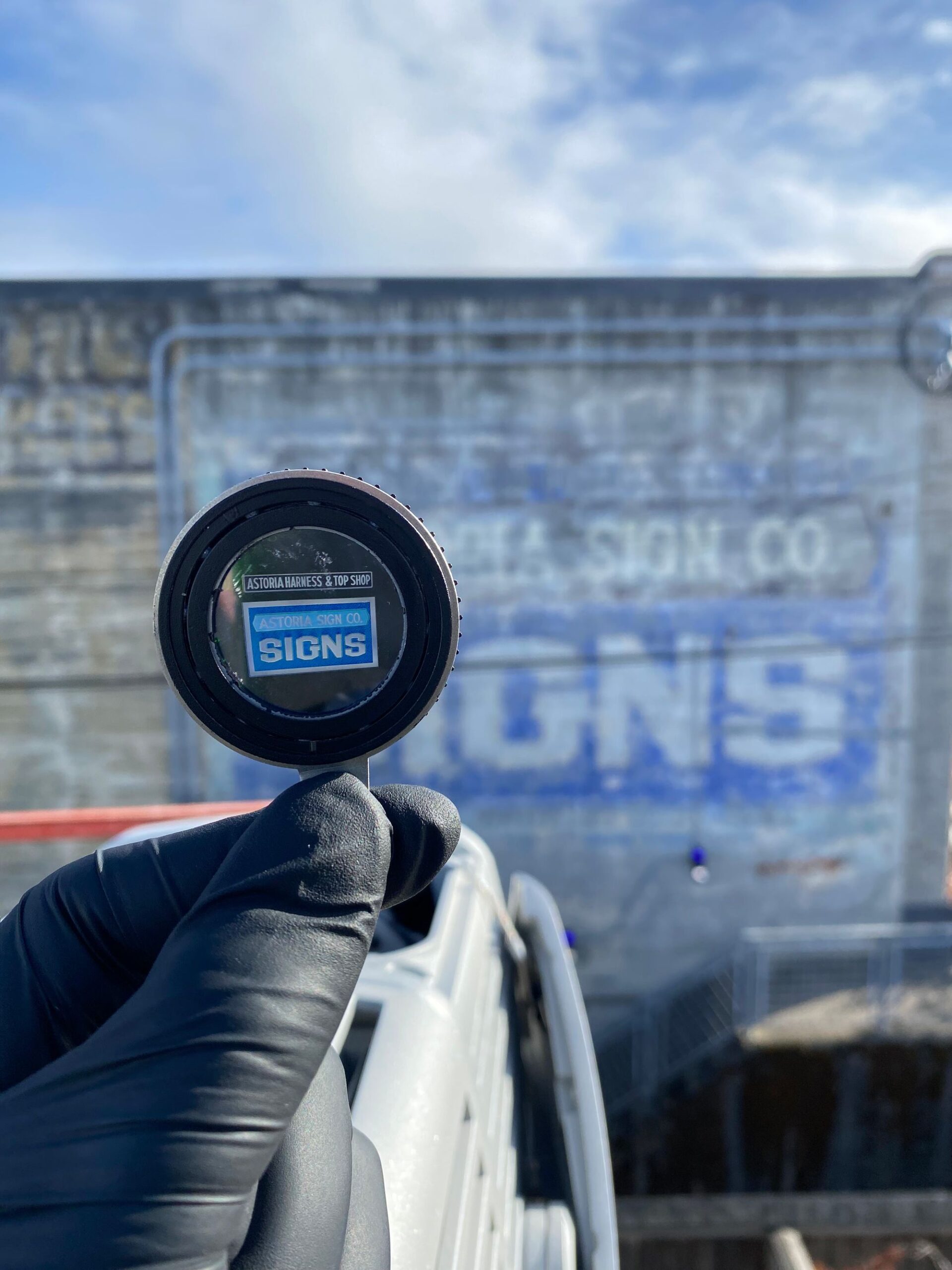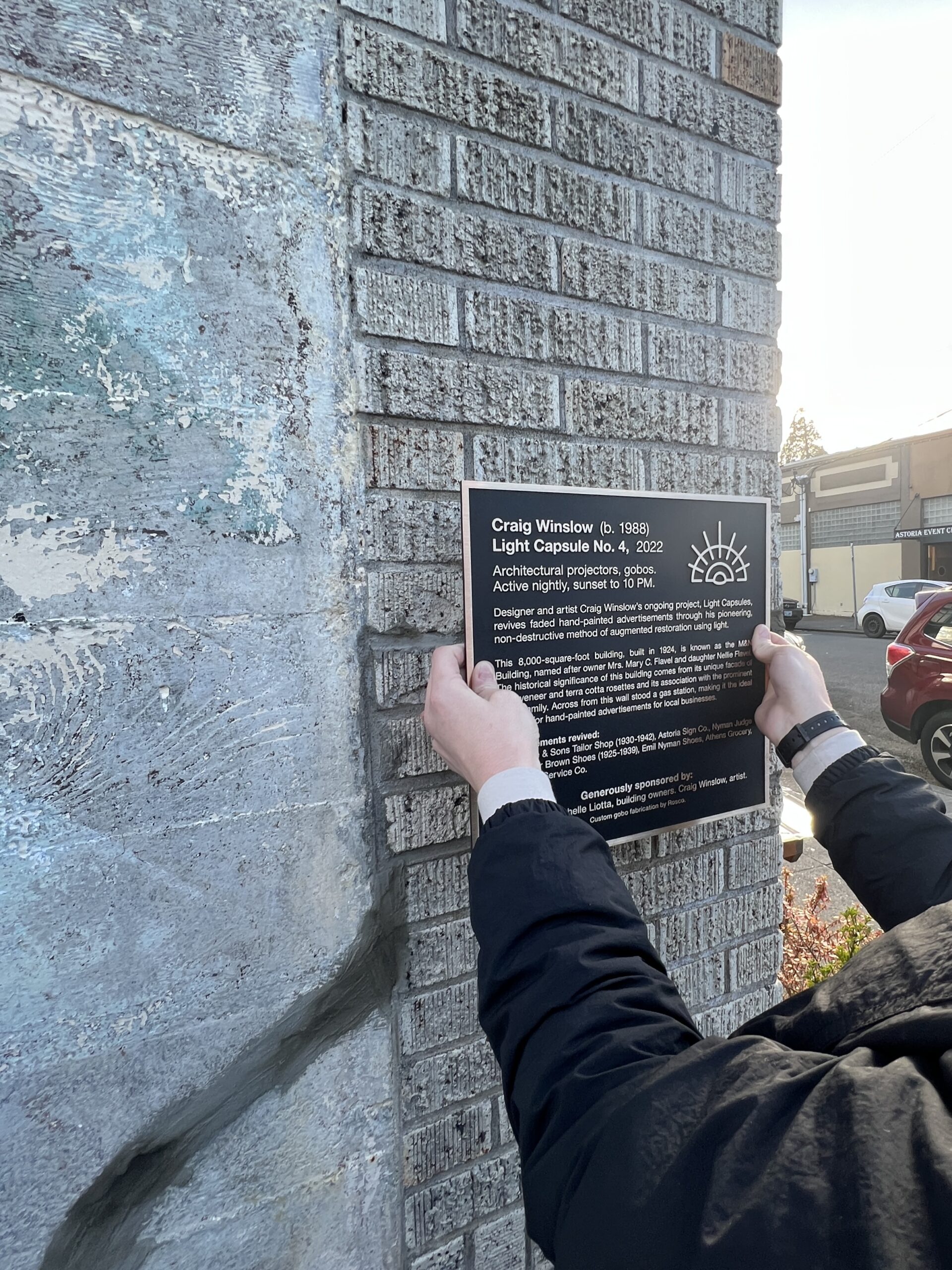
No.4
Astoria Sign Co.

Location: Astoria, OR
Date illuminated: June 11, 2016
Permanent launch: February 10, 2023
Layers: 2
Location & Viewing Hours
On display nightly: Sunset - 11 PM
This installation was made possible by the generous sponsorship of building owners Marcus & Michelle Liotta, and Craig Winslow, Artist.
History
The 8,000-square-foot building, built in 1924, is known as the M&N Building, named after owner Mrs. Mary C. Flavel and daughter Nellie Flavel. The historical significance of this building comes from its unique facade of brick veneer and terra cotta rosettes and its association with the infamous Flavel family. Across from this wall stood a gas station, making it the ideal location for hand-painted advertisements for local businesses.
In total there are eight businesses represented across the wall and the layers on it: Astoria Harness & Top Shop; Carl Laine & Sons Tailor Shop (1930-1942); Astoria Sign Co.; Nyman Judge Inc.; Buster Brown Shoes (1925-1939); Emil Nyman Shoes; Athens Grocery; and Radio Service Co.
Some of the signs at different life stages with Rocky's Shell Service Station in the foreground. From the Ball Studio Collection at the Clatsop County Historical Society.

Photo courtesy of Brian Laine.
"Carl Laine, the tailor, was my grandfather. He had come through Ellis Island from Finland about 1900, then after a couple of years in Minnesota moved to Astoria. My dad, Victor Laine, had to learn English when he went to grade school, as all that was spoken at home was Finnish. This is a picture of Carl Laine at work—he was always dressed impeccably in a three-piece suit, even when fishing for crawdads."
— Brian Laine, Carl Laine's Grandson.
Permanence
Light Capsule No. 4 was the first large-scale temporary projection of the ongoing Light Capsules series. It was initially brought to life as a one-night event in 2016 during Winslow's Adobe Creative Residency.
Astoria is the second permanent Light Capsule and the first of its kind in the United States. It employs the use of architectural lighting and the creation of a printed piece of glass - also known as a gobo - that produces the image when light from the architectural lighting fixture passes through it.
Light Capsules™ © Winslow Studio, LLC





